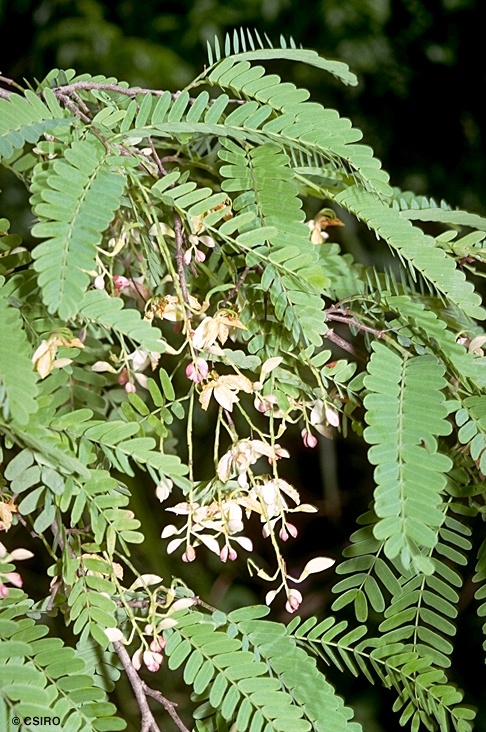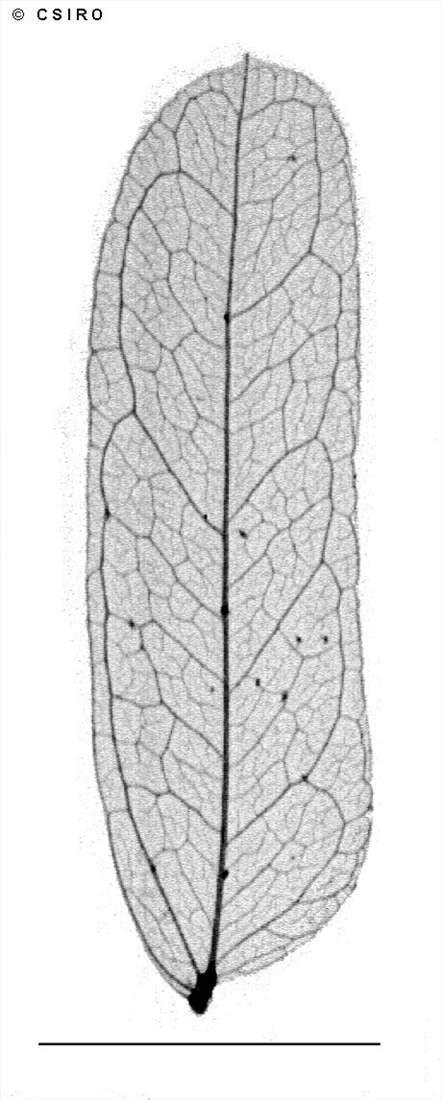Australian Tropical Rainforest Plants - Online edition
Tamarindus indica L.



Linnaeus, C. von (1753) Species Plantarum 2: 34. Type: Habitat in India, America Aegypto, Arabia.
Tamarind
A cream layer usually visible beneath the sub-rhytidome layer before the first part of the outer blaze. A faint pea (Pisum sativum) or green bean (Phaseolus vulgaris) odour usually present in the blaze.
Stipules filiform, more than 6 mm long, caducous and visible only on fresh succulent expanding shoots. Leaflet blades about 20 x 5 mm, intramarginal vein present on one side of the leaflet blades but not always on both sides of the midrib. Compound leaf rhachis grooved on the upper surface and ending in a small scar.
Surface of the fruit somewhat scurfy. Pods thick, oblong, indehiscent, about 3.5-20 x 2.5 cm, often constricted between the seeds. Seeds surrounded by an edible pulp which is sour to taste. Seeds 1-12. Individual seeds about 15 x 10 mm. Testa shiny brown.
Features not available.
An introduced species originally from Africa, now naturalised in WA, NT, CYP, NEQ, CEQ and southwards to south eastern Queensland. Altitudinal range from near sea level to 450 m. Grows in disturbed gallery forest and monsoon forest.
This species was probably introduced into Northern Australia by Macassan fishermen before European settlement of Australia. The introduction attains greater significance when it is remembered that the Tamarind probably originated in Africa and was introduced into South East Asia by way of some of the ancient sea trade routes which existed a long time ago.
This species has had a long history of use by people particularly in Africa and Asia. It has been used for a large number of purposes. e.g. animal fodder, food for people and medicinal uses.





